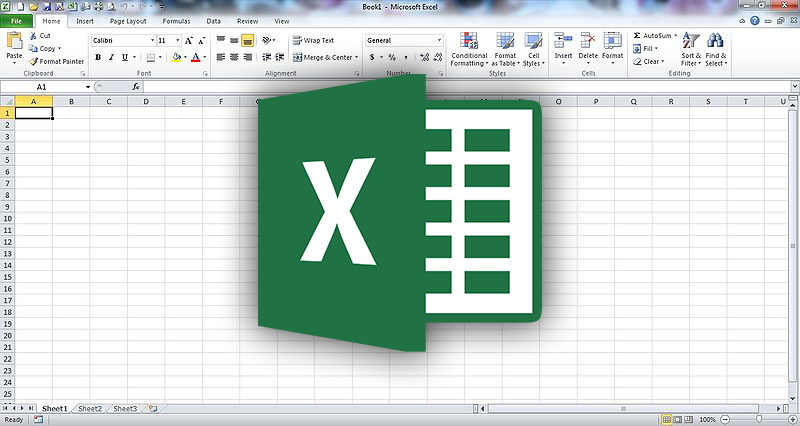Limitations of Excel Inventory Management
Post on Monday, December 18th, 2017 in Accounting

Small businesses that are just starting off prefer tracking inventory in Excel. For beginners, Excel can be a quick, convenient, and cost-effective way to manage inventory.
But there are very real growing pains associated with it, and it’s probably better just to start out on the right foot with professional inventory management software. Here, we’ll show you how to track inventory in Excel, then move to the limitations and what an inventory software solution can do that Excel cannot.
First, let’s see how to keep track of inventory in Excel.
Excel Inventory Management: How It Works
Before you start using Excel for inventory, you should set up an Excel inventory management template that can act as your free inventory management software in Excel. You can do one of the following:
- Use a free basic template included with MS Excel.
- Download a predefined template on the Internet.
- Create your own custom inventory management Excel template.
So, how to set up a template for your inventory management spreadsheet? A basic template should include the following values:
- Product number
- Product name
- Item description
- Item price
- Item cost
- Item stock
- Quantity to reorder
- Quantity sold
There may also be additional values, such as safety stock, reorder point, total inventory value, etc., but the more columns you have, the more difficult it is to track your Excel inventory, so most businesses keep it simple.
Then, after your inventory management Excel template is ready, you can start working with your inventory. To speed up the process, you can use special Excel functions, such as:
- SUM. Use this function to add up any values as well as calculate inventory totals.
- RANK. Use this function to arrange items based on sales quantity, inventory quantity, or the number of products that you have received to your inventory.
- SORT. Use this function to sort your inventory items by different parameters, so you can quickly view your products based on sales, profitability, or remaining stock.
With an inventory management Excel spreadsheet, you can create inventory reports. It can be weekly, monthly, or yearly reports. The simplest way to do it is to configure basic parameters for your inventory and then drag and drop the sheet to an empty Excel workbook.
This copies all of your work to the new book, and you get a clean inventory page for each week, month, or whatever reporting period you choose. For a yearly inventory, you can also drag and drop all your monthly records into one file with 12 sheets for 12 months. You can also use your data to generate charts, but later you should decipher those charts.
Basically, that’s how Excel inventory tracking works. However, as your business will be growing, you will start noticing certain limitations of Excel as compared with fully functional inventory management software. Let’s see what problems can occur with inventory Excel tracking.
Disadvantages of Excel Inventory Management
No real-time inventory data.
It’s difficult to constantly synchronize the inventory figures in your inventory Excel sheets with the amount that you actually have in stock. And if you manage your inventory at multiple locations, then this synchronization will become almost impossible with inventory tracking on Excel.
Higher risk of human mistakes.
Most values in your stock inventory spreadsheet should be keyed in manually, thus increasing the chance of mistakes. And it becomes even worse when your inventory is frequently moved between different locations. That’s why you should always make audits and reviews of your Excel inventory.
Slow inventory management.
With inventory management software in Excel, it will take you hours to track your inventory. With more powerful inventory management software, like Dynamic Inventory, it will take you just a couple of minutes.
Only one user at a time.
Excel inventory management makes it difficult, and at some levels, impossible to create several accounts with different access rights that could manage your inventory at different permission levels.
No transaction history.
With Excel inventory, you cannot view your transactions back in time to analyze your inventory trends and make forecasts.
Limited user interface.
Excel is all about rows and columns, nothing else. It offers valuable functions, but it’s difficult to implement them as compared with modern inventory management tools.
These are the drawbacks of inventory management in Excel. Unfortunately, for large businesses this software becomes outdated due to a huge amount of tasks and transactions. It’s like a paper ledger vs. computer programs. The more developed your business, the more progressive and sophisticated inventory management tools it needs.
Embrace Real Inventory Solutions
Inventory software like Dynamic Inventory have solutions that blow Excel inventory management out of the water. Here’s just a few of the benefits of using inventory software over Excel. You can find a full list of features here.
Product Organization
You can attach images, warranty information, manuals, descriptions of products, and more to products and assign each product a location in your warehouse, store, or in storage. You can also add custom fields that don’t already exist and see the last price you paid for a product from each unique vendor.
Tracking Purchases
Purchases are organized by colors that coordinate with each stage of the purchase order. You can get real time reports of inventory levels as they change with new orders. Print orders, invoices, returns, and receive lists as they come in.
Reports Oversight
You can custom filter data by vendor location, product category, name, sales representatives, and status and save report templates for later use.
Geared for Customers
You can leave notes with preferences for certain customers, record different addresses for each customer’s locations (billing, shipping, business, etc.), view sales history for each customer, and more.
Sales Tracking
Track everything — get alerts for when inventory is low, find out what sales representative is responsible for a particular order, print sales documentation, look after shipments, payments, returns, and order status.
Internal Organization
Assign your team members to groups, send messages between groups, track user login and logout times, add profile pictures, contact information, and positions, and more.
Choose Inventory Software
We at Dynamic Inventory understand the needs of growing businesses and have created software solution that will completely cover them. In addition to inventory management, we offer order management, barcoding, dynamic reports, multiple locations, and more features to ensure easy and smooth control of your inventory.
Feel free to contact us today and arrange a free personal demo to see what our software can do for you.

Adam is the Assistant Director of Operations at Dynamic Inventory. He has experience working with retailers in various industries including sporting goods, automotive parts, outdoor equipment, and more. His background is in e-commerce internet marketing and he has helped design the requirements for many features in Dynamic Inventory based on his expertise managing and marketing products online.
Learn how Dynamic Inventory can streamline your business today!
Schedule a DemoRelated Articles
see all
An Overview of Dell’s Supply Chain Strategy
Dell entered the market in 1985, and evolved from a small, dorm-room based company in Texas to one of the …

How to Improve Your Warehouse Management System
A warehouse is not only a place to store your inventory. It also hosts all of the important logistics and …

How To Write Product Descriptions That Actually Convert To Sales
A product description should not just be a bland list of a product’s features. After the price of an item, a …

